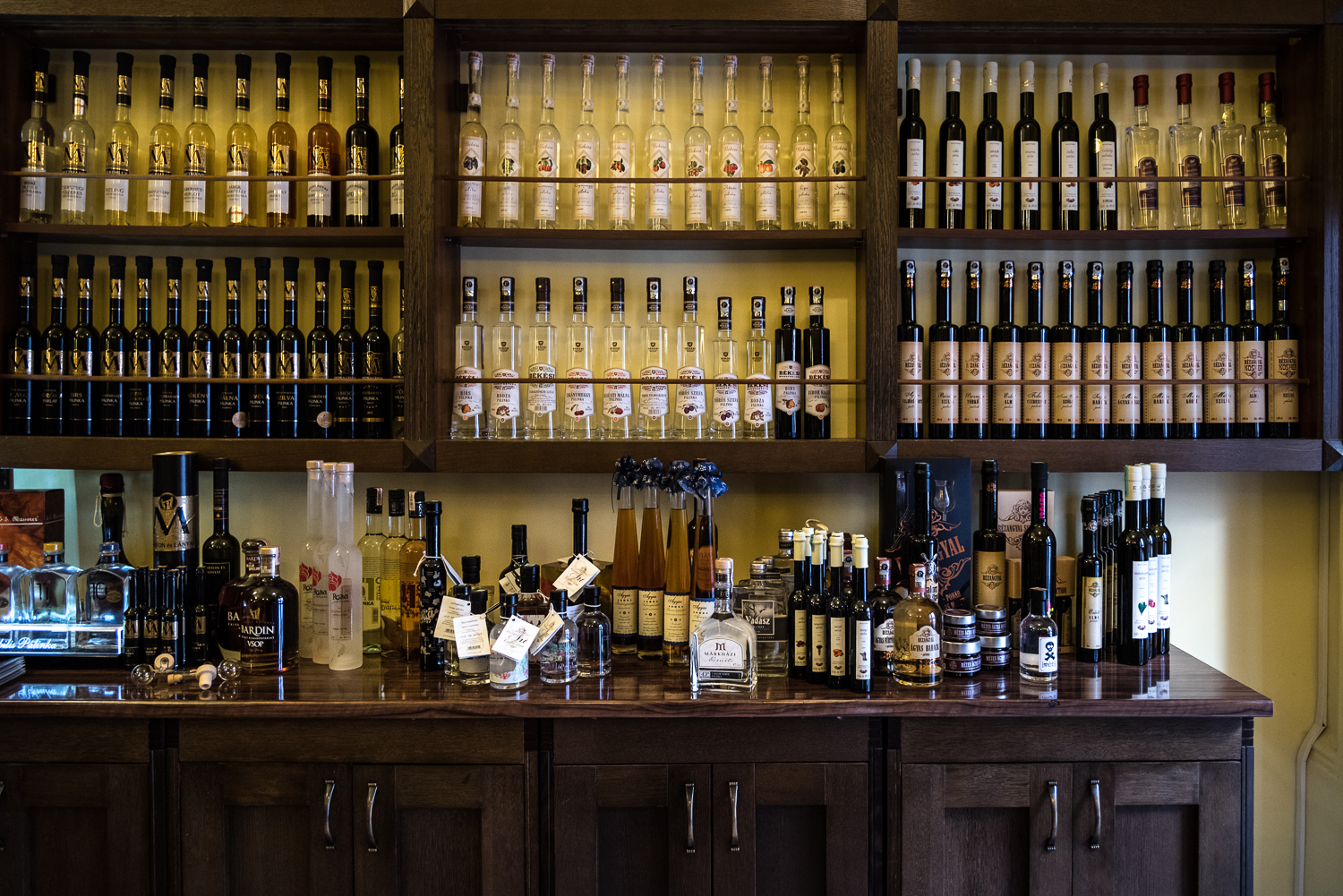Hardly any household in Hungary is without a bottle of pálinka, the nation’s fruity firewater. It’s considered as an integral part of Magyar hospitality, and like it or hate it, visitors can’t really avoid it here, especially if you receive an invitation to a Hungarian home – and in that case, be prepared for the host to offer you a shot early in the morning, followed by many more toasts as the day proceeds. The multi-purpose libation provides an extra kick before the sun rises above the horizon, serves as a remedy for any disease, helps imbibers forget problems and unwind the mind, and above all it’s proven as a potent party starter.
Whether it’s used amid rocking revelry or a gloomy occasion, pálinka is the perfect accompaniment for all occasions in Hungary, as it has been for centuries: farmers have long consumed the alcoholic treat before their lengthy day ahead, while grandfathers (and grandmothers) enjoyed a few shots prior to meals.
Although the nation’s traditional tipple was originally a distilled spirit of rye, wheat, corn, or potato, today Hungary’s protected drink is made of a mash of fine fruits like apricot, plum, strawberry, cherry, or grape.
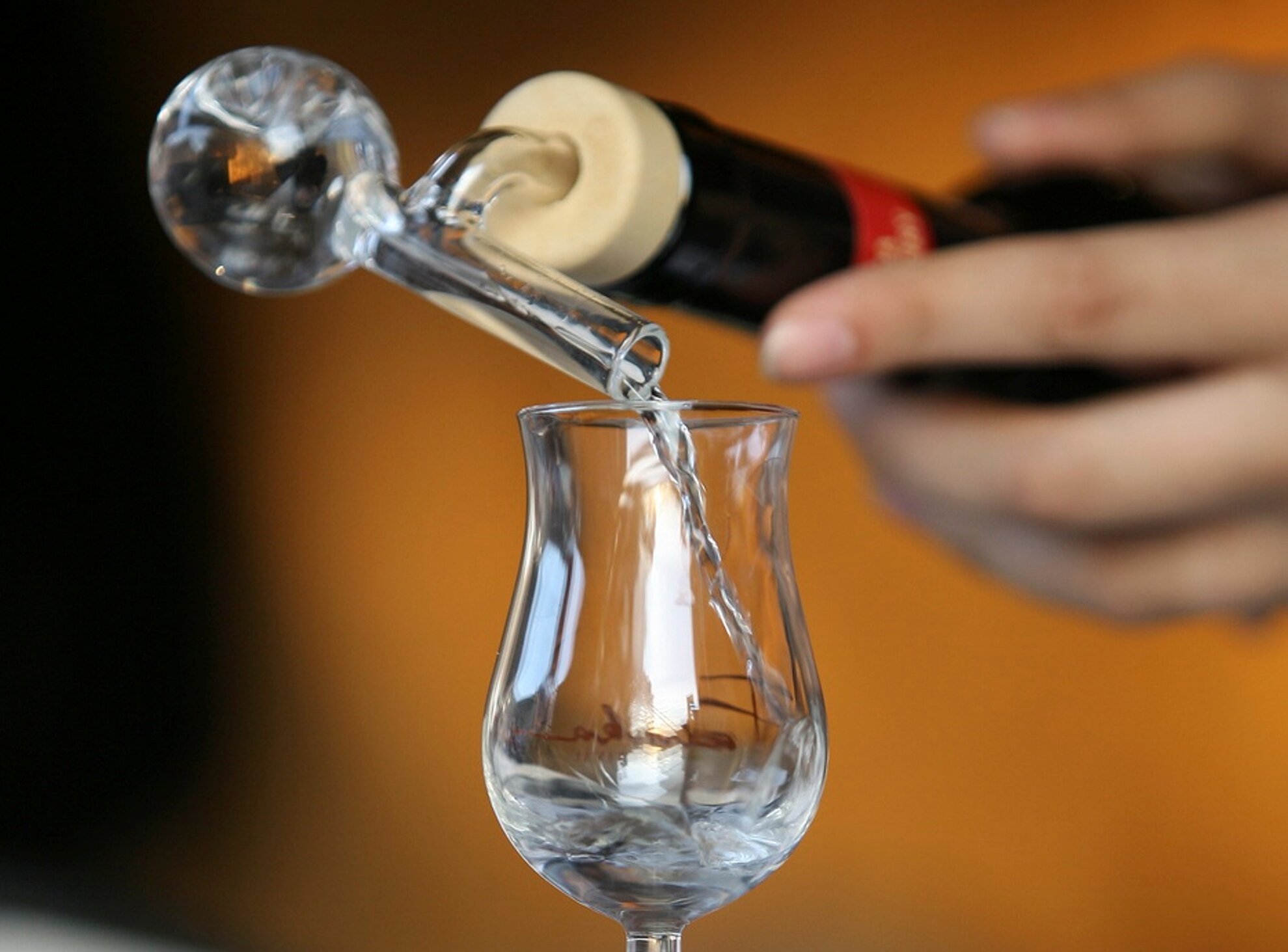
The spirit first emerged during the 14th century, when King Charles I of Hungary and Elizabeth of Poland used a form of rosemary-blended distillate as a medication to treat their aching arthritis. In those days, the fiery fluid was referred to as the aqua vitae (water of life), and used as a remedy to cure both external injuries and internal diseases; it was only during the 15th century that the focus shifted to the distillate’s intoxicating effects, and the nation began consuming the alcoholic treat just for pure enjoyment... although for centuries the distilleries were certainly not high-quality facilities, resulting in large quantities of less-than-tasty liquor.
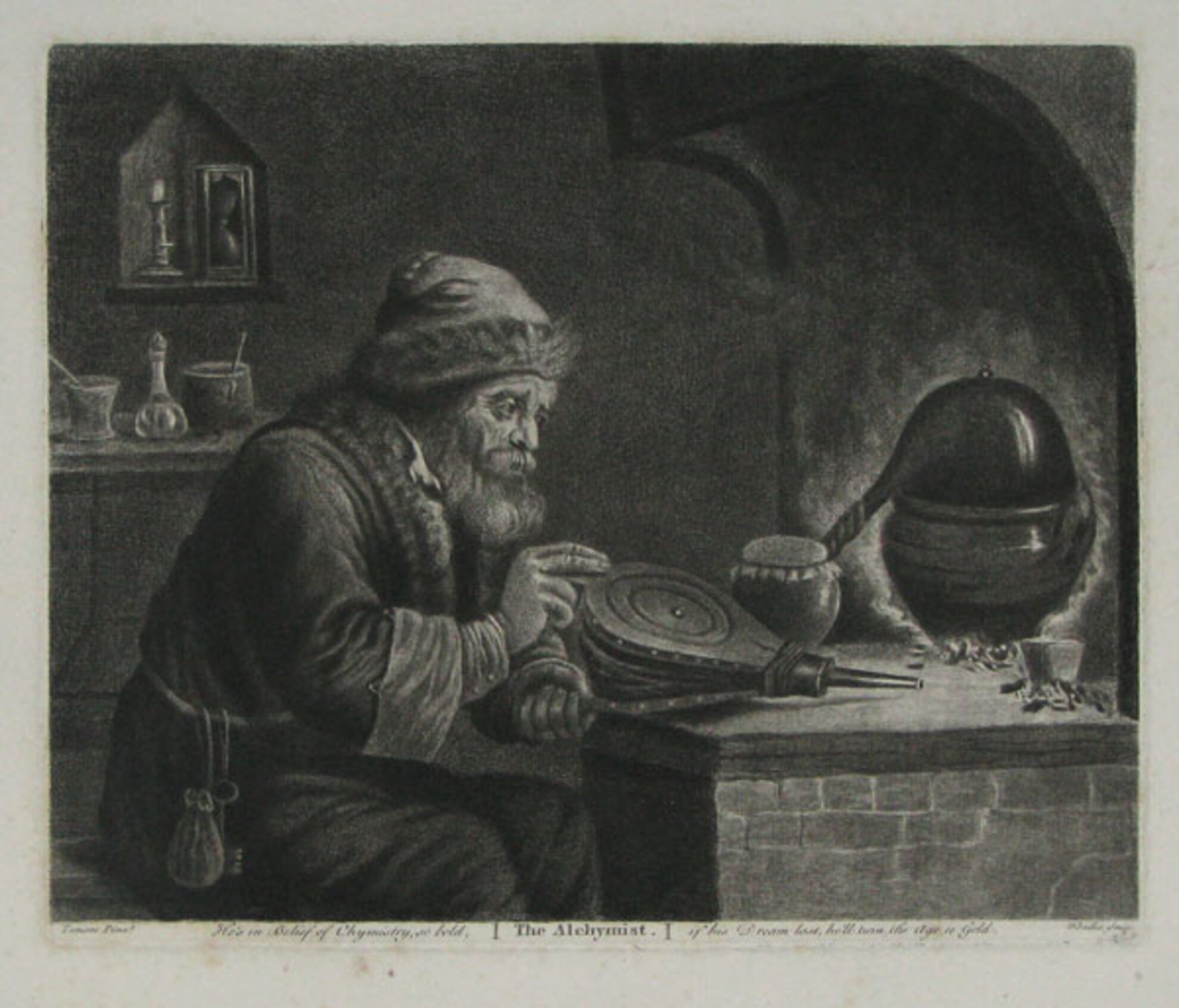
In the 19th century, multiple measures were introduced to control pálinka production and enhance the quality of the tipple which by this time had become an increasingly sought-after spirit in the country: in 1888 the government imposed an alcohol tax on the distilleries to regulate pálinka manufacturing, but in return for a supplementary payment, the producers were allowed to exceed the allocated quota. Later in the early 20th century, with the development of alcohol-manufacturing processes, modern distillation columns emerged to simplify the burning progress and enhance the libation’s quality, and in 1920 the government banned homemade pálinka.
Around this time, plum and marc (the solid remains of the grapes, like skin, seeds, and stems) were used as a base for the vast majority of pálinkas, followed by apricot in the 1930s and apple in later years. Due to the restrictions of home distillation, illicit moonshine activities started sweeping through the country, creating an ever-growing amount of low-quality Hungarian hooch.
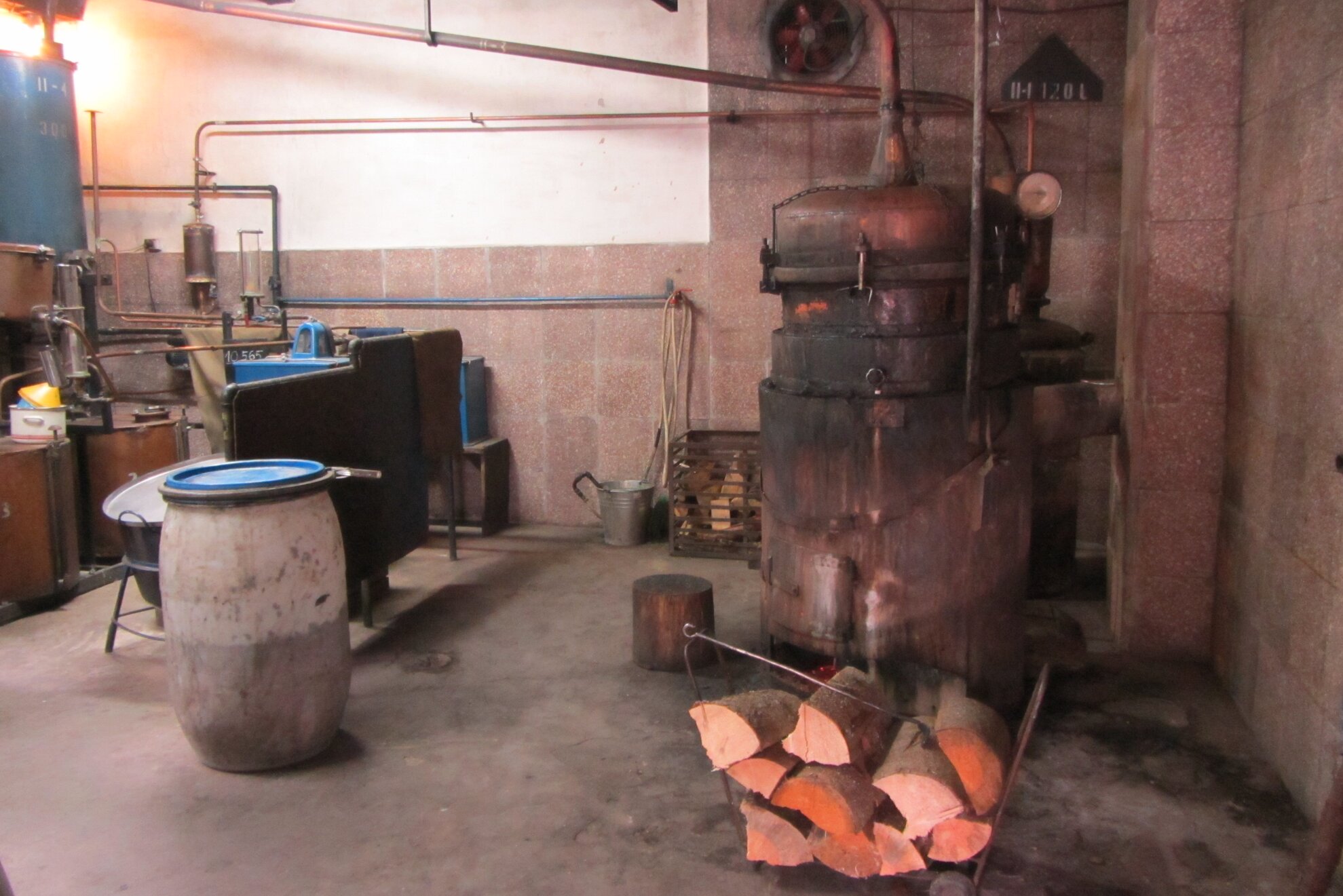
After World War II, using food crops to make pálinka was considered a waste, as it requires a large amount of fruit to create the pomace base. Several distilleries were commissioned by private individuals to turn their homemade fermentation into pálinka, although the majority of the pomace was below ordinary quality standards, so a large amount of the pulpy mass ended up being processed. This practice was ended in 1970, but before 1996 all blended and chemically flavored alcoholic essences were still marketed as pálinka, until new legislation banned the use of artificial additives. Finally, in 2004 the European Union registered pálinka as a Hungaricum products (Hungarian specialty), and substandard commercial versions of the booze were simply renamed as “spirit drinks”.

Today the popularity of pálinka is increasing rapidly, and since 2010 tax-free home-based distillation is legal again, with strict conditions attached: private manufacture is only permitted from a self-made pomace, the drink must be for personal use, and individuals can produce no more than 50 liters a year, with a maximum 86% alcohol content. Whether the production happens amid industrialized settings or in the back of our garden, the pálinka production process consists of four fundamental steps:
fruit mashing, fermentation, distillation, and aging.
To earn the official title of pálinka, this liquor must be made in compliance with highlyregulated laws, and the name refers exclusively to drinks made of fruit grown solely within Hungary’s borders, while the end product should contain a minimum of 37.5% alcohol. Even though it’s best known as the national drink of Hungary, the production spans beyond the country’s borders: four Austrian provinces are also entitled to call their apricot-infused intoxicants pálinka, as long as the concoction course complies with the respective regulations. In either case, performing any flavoring, sweetening, or coloring practice during pálinka manufacturing is strictly prohibited.
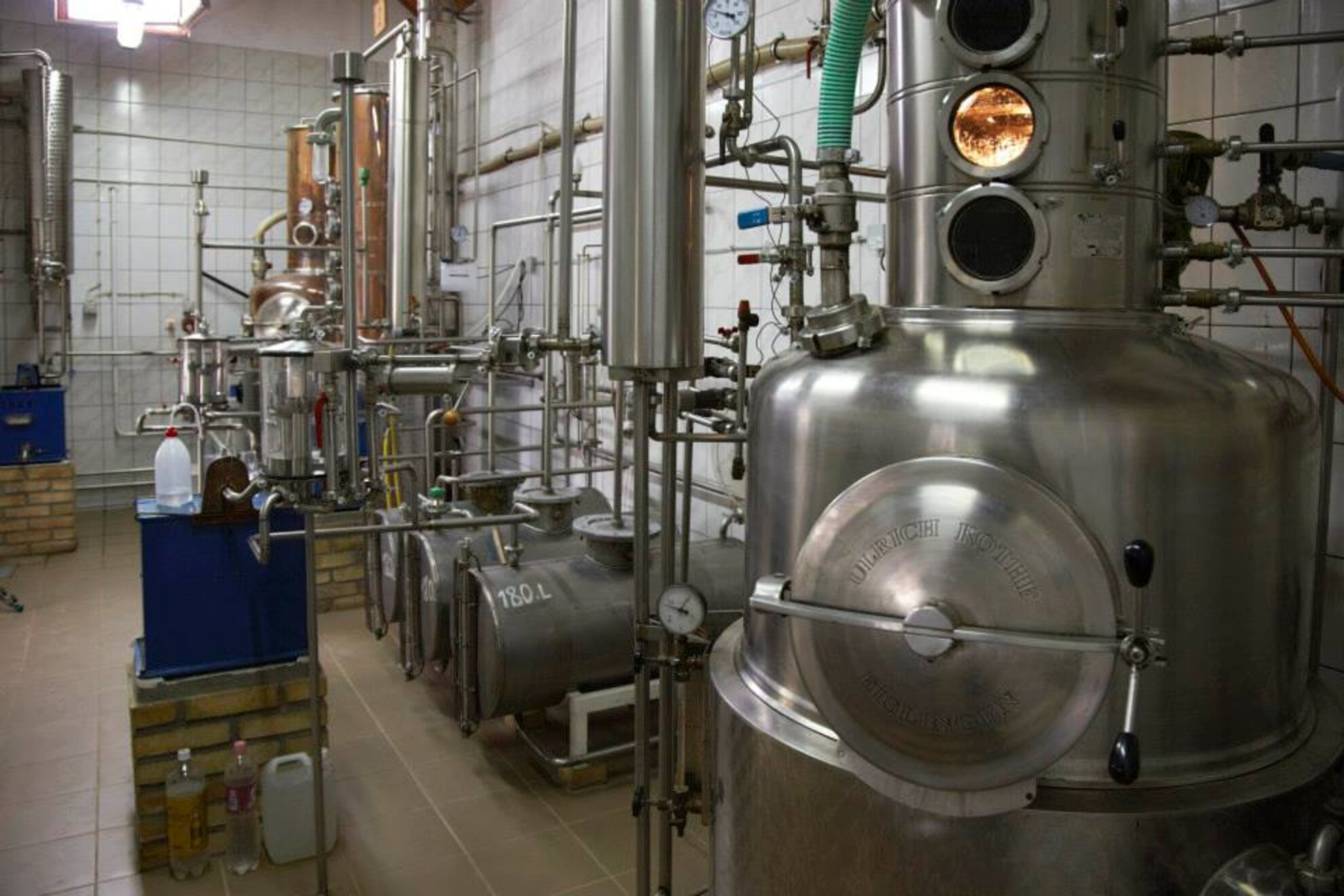
There are several different types of pálinka, distinguished depending on the fruity base ingredient, the production method, and the aging process: Kisüsti (“small pot”) is a double-distilled spirit made in a small copper pot, Érlelt (“aged”) is kept for a minimum of three months in an oak or mulberry barrel, the Ó (“old”) pálinka is aged for at least 12 months in a wooden container, Ágyas (“bedded”) pálinka rests for a minimum of three months on a layer of ripe or dried fruit, and Törkölypálinka (“grape pálinka”) is made from grape pomace. Based on the geographical location of a specific fruit, a handful of protected pálinka varieties are identified as unique local products, including Szatmári Plum Pálinka, Kecskeméti Apricot Pálinka, or Szabolcsi Apple Pálinka.
In addition to the geographically protected varieties, there are several pálinka brands on the Hungarian market that offer a wide range of ordinary and top-notch tipples; the most renowned distilleries include Agárdi, Rézangyal, Zsindelyes, and Zwack, all boasting a rich lineup of flavorful bottles.
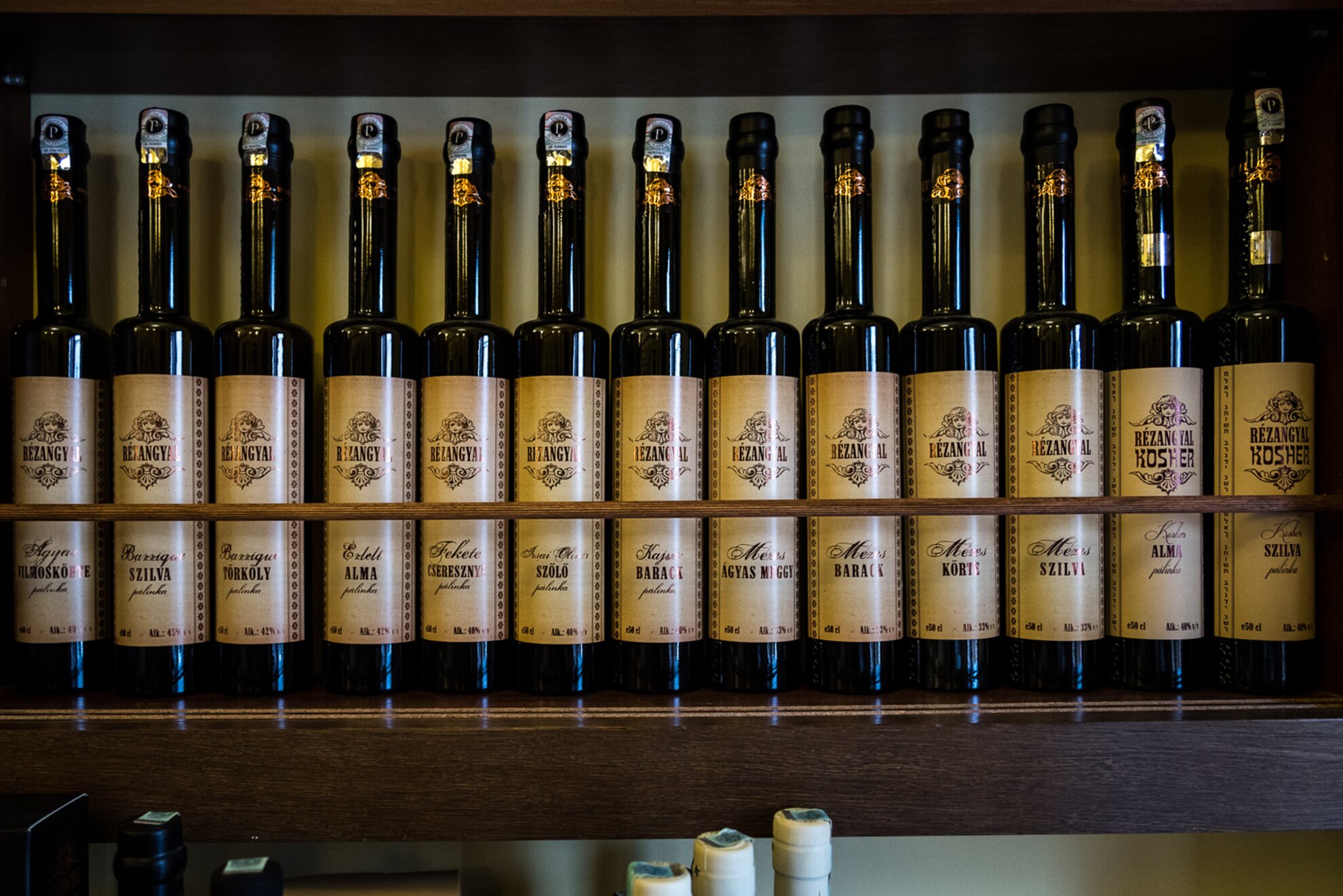
A variety of pálinka drinks are available at almost all of Budapest's ordinary pubs, ruin bars, and restaurants, however those who would like to explore a diverse selection of this potent potable can visit A Magyar Pálinka Háza (Budapest 1088, Rákóczi út 17), a specialty store offering pálinka of different brands and flavors.
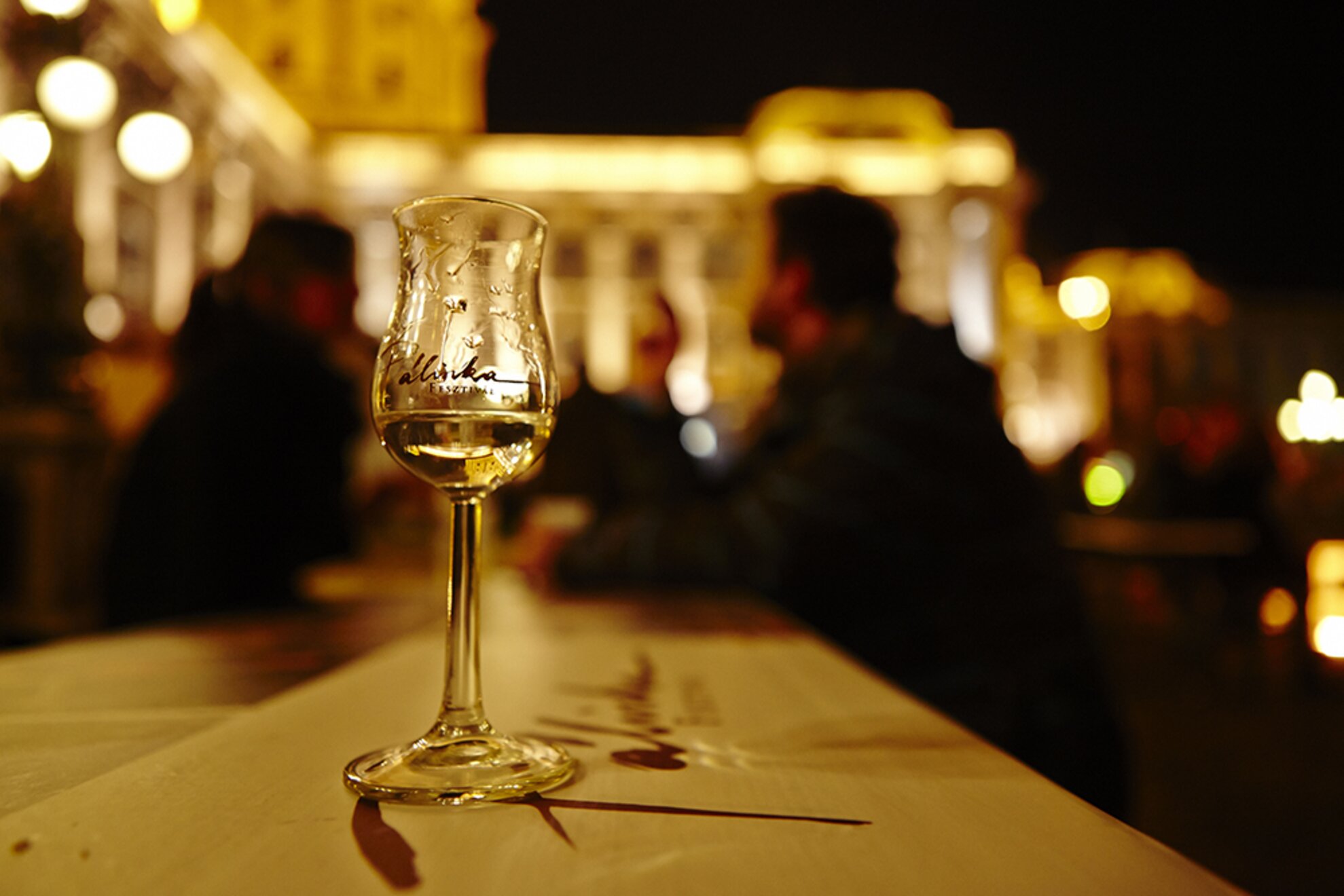
When served, pálinka should not be too chilled or too warm, but at room temperature (18-20°C), and the aromas can be best identified when the inebriant is slowly sipped from a tulip-shaped glass, as the tapering top enhances the scents as they steadily ascend to our nose. Many think that the best way to devour pálinka is to gulp it in one go, but the fragrance, the fruity zest, and the quality can only be relished when we leisurely swirl the liquid in our mouth, allowing the aroma to fill our mind before letting the sweltering liquid slide down the throat. Beside its inebriating effects, pálinka is often used to add a special flavor to a variety of delicate treats – in 2015, the spicy spirit served as one of the key ingredients of Hungary’s national cake.
